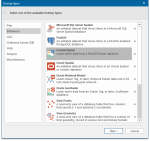PostGIS Raster
This type of database overlay loads raster data from a PostGIS Raster Database.
Select Add Overlay > Databases > PostGIS Raster.
Select the PostGIS Raster Layer you wish to open as a SIS overlay.
| Option | Description | |
|
Host |
The PostgreSQL database server host. |
|
|
Port Number |
The PostgreSQL database server port. |
|
|
Database |
Specify the database to connect to. |
|
|
Username |
PostgreSQL database user name. |
|
|
Password |
Password for the specified PostgreSQL user name. |
|
|
Save connection details in UI settings database (with encrypted password) |
Check this tickbox if SIS should store these connection details in the UI settings database. The password will be stored in encrypted form for security |
|
|
Saved connection name |
This text box will become active if the Save connection details in UI settings database (with encrypted password) tickbox is checked. Enter a meaningful name for this connection. This text box cannot be left blank and the same name cannot be used twice. |
|
Note: You cannot select PostGIS Raster Layers that are stored in PostGIS 2.0 as a filesystem raster (such rasters are called out-db). This limitation is not present if using PostGIS 2.1 or later.
The difference in behaviour is due to changes in the ST_AsBinary function of the PostGIS Raster API between 2.0 and 2.1 releases. (PostGIS 2.0 does not allow you to query out-db rasters as in-db. See http://postgis.net/docs/manual-2.0/RT_ST_AsBinary.html. However PostGIS 2.1 or later allows this. See http://postgis.net/docs/manual-2.1/RT_ST_AsBinary.html.)
Connection Type
- Dynamic: Maintains an active connection to the PostgreSQL Database, with all redraws returning to the server. The Dataset will be editable, subject to PostgreSQL user privileges.
- Local cache: Makes a local copy of the entire table. The dataset will be read-only.
- One-off import: Copies the entire table into an Internal Overlay.
Click Finish.